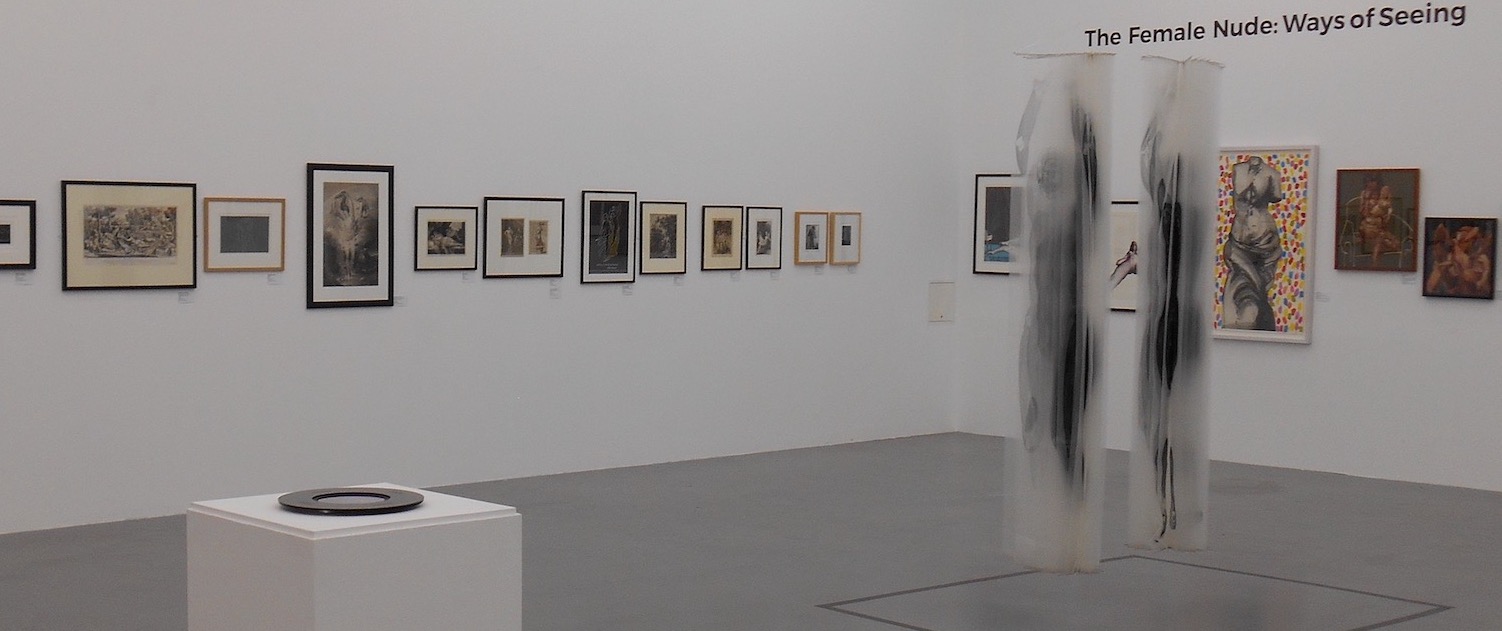Second year undergraduate Niamh Packman discusses artists’ engagement with hair in Life Between Islands

A section of Alberta Whittle’s Road Openers (For E) and her blue bench in Life Between Islands
Life Between Islands showcases almost a century of British-Caribbean artwork featuring over forty artists. Taking inspiration from the unfinished memoir of Stuart Hall, Familiar Strangers: A Life Between Islands (2017), the co-curators Alex Farquharson and David. A. Bailey spent six years working on a show which would broaden the cultural, political and intellectual experience in the home of British art, the Tate Britain. The exhibition takes its flow from Kamau Braithwaite’s tidalectics, following an overlapping chronology and sense of movement, reminiscent of the waves of the Atlantic and the people who journeyed across it. The exhibition begins in the 1950s, excluding the work by Ronald Moody, with the Windrush generation arriving in Britain. Throughout, the exhibition echoes Britain’s dark past and transatlantic slave trade, rooted not only in the artworks which span to present day but in the foundations of the temple museum built from the sugar plantations itself. Alongside the regretful themes of slavery, oppression and police brutality are celebrations of creolisation, carnival and black power movements. But what does hair have to do with this exhibition?
Hair was first used as a negative racial signifier in 17th and 18th century “scientific racism” to justify the enslavement of Africans (Mercer, 1994, p.101). During this period of the enlightenment, value and worth were attributed to things which fit into a white Eurocentric beauty standard (Mercer, 1994, p102). From a young age, black children began to have their hair tamed and socialised by the women in the family (Tarlo, 2016, p.138). Whilst this is linked with oppression, it provided an opportunity for experimentation in the diversity and ingenuity in black hairdressing. Certain hairstyles can have different meanings depending on their place of origin. Hair suggests social or economic standing as well as cultural, political or religious beliefs – hair is on the cusp between self and society (Mercer, 1994, p.103). The hair styles represented in Life Between Islands are born out of diaspora and creolisation. They have become symbols of the natural hair movement as well as black power and resistance to oppression.
Alberta Whittle’s Road Openers (For E) is a mixed media installation displayed by hanging from the ceiling above eyelevel, unlike most displays in the exhibition. Located in the room dedicated to Alberta Whittle’s work, the two sculptural pieces that comprise Road Openers (For E) are displayed either side of her film work and bespoke boat shaped bench, breaking up the installation into two. A choice Whittle made herself (Tate, 2021). The room encourages visitors into the space through its cushioned seating and bright blue theme. Yet, there is something unsettling about Whittle’s chanting, her alien like paintings and Road Openers (For E), like ghosts, looming over the space casting shadows. One part is a figure constructed of cheap laundry bags, perhaps evocative of the carnival spirit, the hairy man. The other is multiple dreadlocks or braids knotted together to form one long rope. The latter half is easy to miss due to its smaller scale and negative space. Made from a mixture of human hair and other fibres, it is easy to see the naturally sculptural qualities of afro hair.

The second section of Alberta Whittle’s Road Openers (For E)
The breaks and then repaired sections of Road Openers (For E) could represent indecision. Oscillating between dreadlocks, which are a symbol of Religious and Caribbean identity, and brushing it out or cutting it into another style. The breaks could also represent the waves of connection and disconnection with Caribbean heritage, almost as if the knots are healing breaks with the past and making a connection to the ocean. A central theme in Whittle’s work as well as the flow of the exhibition. Perhaps this is why it has been displayed as loops, to imitate the movement of the ocean.
Extracts from Niamh Packman’s essay.
Mercer. K (1994) “Black Hair/Style Politics” in Welcome to the Jungle. London: Routledge. p.97 – 128
Tarlo. E (2016) Entanglement: The Secret Lives of Hair. London: Oneworld
Tate (2021) “Life Between Islands” in Tate Etc. Issue 53: Autumn 2021.
